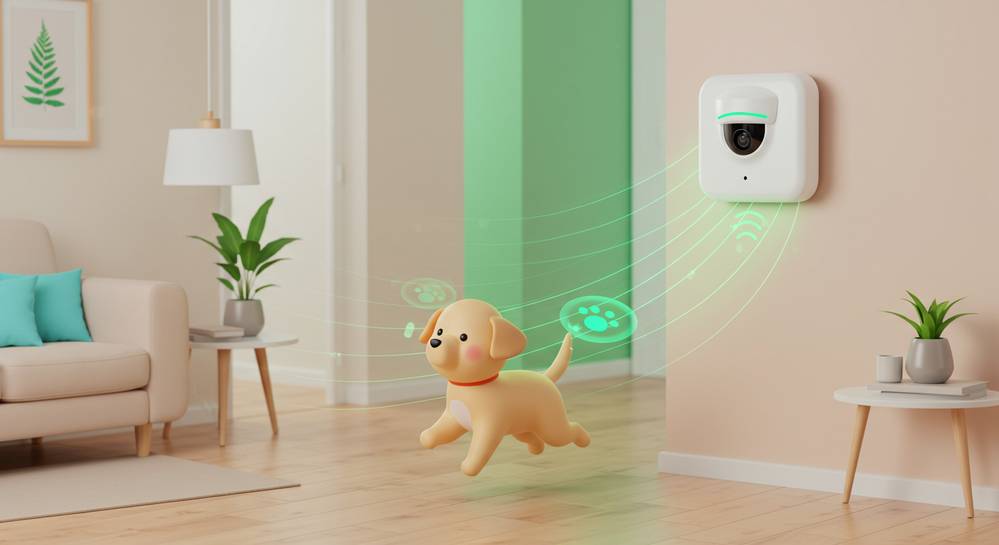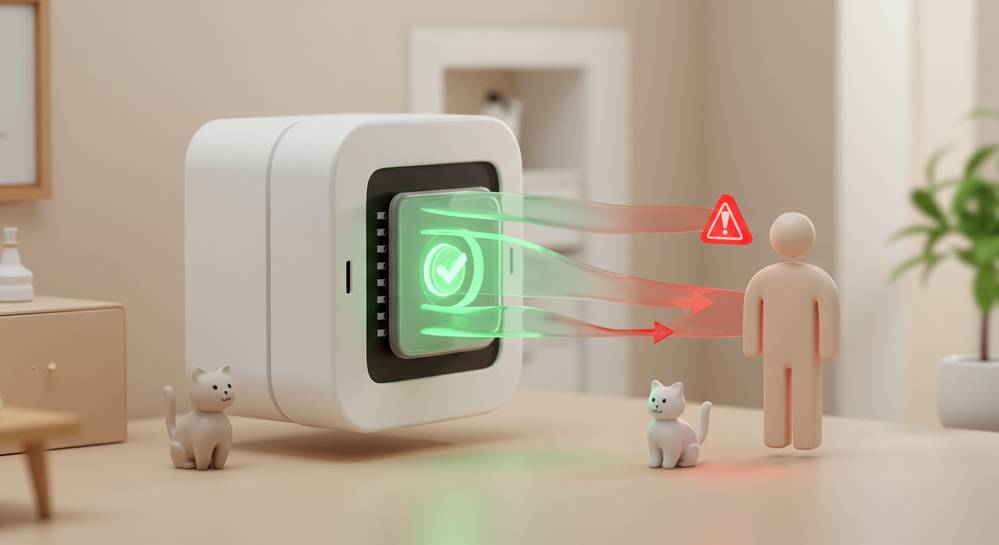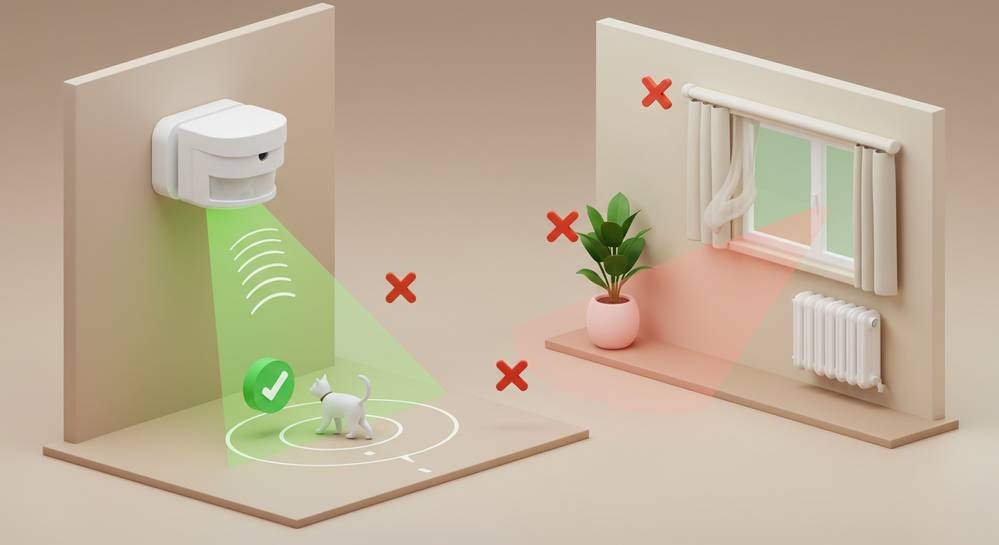A motion alert on your phone is meant to be a warning, but it becomes a nuisance when the culprit is your cat. Standard motion detectors often fail to tell the difference. This guide explains how pet friendly motion detectors for homes use smart technology to provide reliable security, ignoring your pets while detecting genuine threats. We will explore how they work, what to look for, and how to install them for true peace of mind.
Contents
How pet friendly motion detectors solve the false alarm problem

How pet friendly detectors restore your peace of mind
The biggest weakness of a standard motion detector is its inability to distinguish between a pet and a person. This limitation creates a constant stream of false alarms for pet owners. Frustrated by the noise and potential fines, many simply disable their sensors. This action unfortunately renders their entire camera home security system ineffective, leaving their property completely unprotected. It is a common problem that creates a major security gap.
Pet friendly motion detectors for homes are the definitive solution. Instead of reacting to all movement, these smart devices use a combination of advanced sensors and intelligent algorithms. They analyze the size, speed, and heat signature of a moving object to differentiate between your curious cat and a potential intruder. This technology ensures your pets can roam freely while your security remains active and reliable, providing true security without the constant annoyance.
The technology behind pet immune motion sensors

The effectiveness of a pet friendly motion detector stems from its advanced analytical ability. It intelligently distinguishes between the movements of pets and people using sophisticated hardware and software. This is not magic, but a deliberate application of proven engineering principles. Two core technologies are primarily responsible for this capability, ensuring your security system is both smart and reliable.
Passive infrared (PIR) technology
Most pet immune sensors rely on Passive Infrared technology. A standard PIR sensor simply detects changes in heat energy, like body heat. However, a pet friendly version uses a specialized lens and smarter processing. It establishes a weight or size threshold, often ignoring heat signatures from objects under 85 pounds. This allows it to disregard small to medium-sized pets while remaining alert for human-sized figures, forming the first line of defense against false alarms.
Dual technology sensors for enhanced accuracy
For maximum reliability, dual technology sensors add a second layer of detection. These units combine a PIR sensor with a microwave sensor, which detects motion by bouncing waves off objects. To trigger an alarm, both sensors must detect a threat simultaneously. Since a pet is highly unlikely to replicate the size, heat signature, and movement pattern of a person to trigger both systems, this dual-check method drastically reduces false positives and provides superior accuracy.
Key features to consider in a pet friendly sensor
Choosing the right pet friendly motion detector involves looking past the marketing claims. The true reliability of a sensor depends on specific, practical features. Prioritizing these aspects ensures you invest in a system that provides genuine security without sacrificing convenience. A careful evaluation of these key details will help you find the perfect fit for your home and your furry companions.
- Adjustable Sensitivity: The best sensors allow you to customize sensitivity levels. Look for models with adjustable weight thresholds, often up to 85 pounds, to perfectly match the size of your pet and prevent false triggers.
- Detection Area and Range: Consider the sensor’s field of view. Ensure its range covers the intended area without monitoring spots where pets frequently climb, like furniture or cat trees, which could cause false alarms.
- Smart Home Compatibility: Integration with your existing smart home AI system is a major advantage. This allows for customized alerts on your phone and enables automation, such as turning on lights when motion is detected.
- Installation and Calibration: Decide between a DIY setup or a professionally installed system. While DIY offers flexibility, professional installation often includes expert calibration for optimal pet immunity from the start.
Installation tips to maximize effectiveness and avoid false alarms

Even the most advanced pet friendly motion detector can fail if not installed correctly. Proper placement is the key to unlocking its full potential to distinguish between your pet and an actual intruder. By following a few strategic guidelines, you can nearly eliminate false alarms and ensure your home is effectively protected.
- Mount at the recommended height: Always follow the manufacturers instructions, typically 7 to 8 feet high. This gives the sensor a downward-looking angle, making it easy to detect a person while ignoring pets below.
- Avoid high-traffic pet areas: Do not point the sensor towards stairs, cat trees, or furniture that pets use for climbing. An elevated pet can easily appear larger to the sensor and trigger a false alarm.
- Keep away from heat sources: Install sensors far from air vents, radiators, or windows with direct sunlight. Sudden temperature fluctuations can trick a PIR sensor into sending a false alert.
- Test the system after installation: Arm your system and let your pet roam the area. This crucial step allows you to verify the placement and sensitivity settings, making adjustments for maximum reliability.
Choosing the right motion detector is about finding a balance between robust security and the reality of living with pets. By understanding the technology, focusing on key features like adjustable sensitivity, and adhering to proper installation guidelines, you can build a reliable system that protects your home without constant false alerts. For more expert reviews and smart home guides, explore Home Gadget Digest. We help you make informed decisions for a smarter, safer home.















+ There are no comments
Add yours